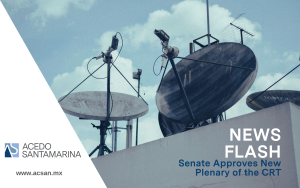
The world is constantly changing and, with the digital era, everything is beginning to be automated, and the world of law should not be the exception. The use of new technologies in the legal field will make work more efficient, reliable and truthful. In commercial and transactional law, new technologies are advancing more than ever; and one example is the use of the technology known as Blockchain. This tool has begun to be used in the world of finance and, in various parts of the world, has been implemented for the issuance of bonds or corporate bonds.What is a bond? (corporate obligation)
Pursuant to Article 208 of the General Law of Credit Instruments and Transactions, a corporate bond or obligation (hereinafter referred to as “…”) is a corporate bond or obligation of the Company.Bonds”) is: “It is a debt security issued by corporations, in which they issue debentures that represent the individual participation of their holders in a collective credit in charge of the issuing company”. These debt securities are forms in which a corporation guarantees a debt through the issuance of securities that will give the holders a certain participation of a collective credit within these corporations, in which they may generate rights over the corporation; either by the collection of that credit or by converting the participation in that credit into shares of the same corporation (when the Bonds are convertible).
In order to issue bonds, an Extraordinary General Shareholders’ Meeting must be held to approve the issuance of these corporate obligations or bonds, in accordance with Section X of Article 182 of the General Corporations Law.
The Bonds are used for the company to raise money without such contribution being considered as a capitalization. That is to say, a company that requires resources to continue or expand its operations can obtain them (through the issuance of Bonds) without resorting to a bank and without the creditors also being partners of the company issuing the Bonds (unless it is agreed that in a certain case, these Bonds will be converted into shares, as mentioned above).
These Bonds, being debt securities, have traditionally been issued physically on paper, but the transformation to the digital era has raised the need for the issuance of debt securities in a digital format; however, it is not clear whether the issuance in digital format can be carried out with the current laws, or whether reforms to the laws are needed for their use and regulation.
What is Blockchain? How does it work?
Blockchain is a shared, decentralized database or ledger that is made up of several computers or nodes, which facilitate the process of recording asset tracking transactions of a business network. Anyone with access to this network can track it and anything of value can be traded within it. Also, being traceable reduces the risk of counterfeiting and the costs of conducting and issuing these transactions are reduced for all involved.[1]
Blockchain has great advantages, such as: the speed and accuracy of the information obtained; the transparency of shared data; the storage of data in a distributed ledger; its unalterability and limitation of access to authorized members. A great advantage of this tool is that users have the same source of reliable information; this source allows them to generate greater confidence and efficiency by being able to observe all the details of a transaction from beginning to end.
A) Key elements of Blockchain
All network users have access to the distributed ledger information and its immutable record of transactions. Transactions are recorded only once, thus avoiding the duplication that is typical in traditional business networks.
No network user can modify or falsify a transaction after it has already been recorded in the shared ledger. If there is an error within a transaction, a new transaction must be made to reverse the error and, in this sense, both the erroneous transaction and the new one will be visible to the users.[2]
B) Smart contracts
These instruments are programs stored in a blockchain which are executed when predetermined conditions are met and are used to automate the execution of an agreement. In this sense, users can be sure of an immediate result, and its advantage is the non-involvement of an intermediary and the loss of time that this entails. These smart contracts can stipulate the conditions for the transfer of bonds or corporate bonds.
C) Why Blockchain?
When a transaction is made using Blockchain, it is recorded as a block of data and they show the movement of an asset. The data block records the programmed information such as: who, what, when, where, where, how much, as well as the conditions of the transaction.
Data blocks are connected to both the downstream and the upstream, and these form a data chain as an asset moves. The blocks record both the exact time and sequence of transactions and these are joined together to prevent information from being modified or added between two existing blocks; generating the irreversible data chain known as Blockchain. This chain is unalterable, which prevents the chain from being modified in bad faith and allows participants to have absolute confidence in the information in the distributed ledger.[3]
III. Countries in which Bonds have already been issued through Blockchain.
Last August 23, 2018, the Commonwealth Bank of Australia issued for the first time the first bond globally in the Australian capital market using Blockchain technology, mandated by the World Bank. This mandate authorized the Commonwealth Bank of Australia to assign ownership of the bond, transfer ownership of the bond and manage the life cycle of the issue for 2 (two) years, which raised approximately US$79.8 million. [4]
In Spain, BBVA bank and the Inter-American Development Bank made the first issue of a corporate bond listed on a regulated and registered market using Blockchain technology in 2022. The platform was developed by ioBuilders, the technology partner in this transaction, and will be used for future bond issues for both the Spanish and Latin American and Caribbean markets. [5]
Can it happen or not in Mexico?
Under Mexican law, we can observe that the issuance of corporate bonds by means of Blockchain is possible in our country, as it would be a very efficient and reliable means for all parties, since the veracity of the system has been proven Blockchain. However, the General Law of Negotiable Instruments and Credit Transactions does not distinguish between negotiable instruments as physical documents and digital documents, and the only cases in which a distinction could be made is in their transmission, as the General Law of Negotiable Instruments and Credit Transactions mentions in Article 28 that the transmission of a negotiable instrument by endorsement can be made by means of a sheet attached to the instrument. This is an assumption in which a distinction could be made between digital and physical titles. But this same law in its article 26 mentions that these securities can be transmitted by any other legal means, which means that the transmission of these securities can be transmitted by electronic means, all of the above in the case of the transmission of the securities, but there is no assumption which could prevent the issuance of the bonds
With respect to its legal effects and validity as evidence before the authorities, the Code of Commerce supports it in a supplementary manner[i] the information generated, sent, received or filed by electronic, optical or any other technology may be used as evidence before authorities and will have the same legal effects as printed documentation.
Although there is an opportunity for all Corporations to use this tool to issue corporate bonds, Stock Corporations are the ones that will have the greatest benefit from using the issuance of bonds through Blockchain, since these are the companies that use the figure of corporate bonds the most, and are regulated in accordance with the Securities Market Law (“LMV”).
The LMV includes in the definition of securities bonds, and how these can be used digitally.[6] Therefore with the Blockchain tool such bonds would be more secure, reliable and verifiable by parties and authorities.[ii]
Conclusion
In accordance with the above, it can be concluded that the issuance of bonds through Blockchain is the future to guarantee its reliability, veracity and trust, as well as it is a process of greater efficiency in terms of its issuance. However, in Mexico the law must evolve and reforms to the legal system must be carried out in order to include provisions on electronic negotiable instruments and to provide greater legal certainty and security regarding their regulation and that their rules be clearer as to the elements that they may have. Digital and electronic tools are becoming the future and present of industries and commerce.
References:
- Dávalos Mejía, Carlos Felipe. (2014). Securities and Credit Transactions. Mexico City: Oxford.
- Fernández Froilan. (2018). World Bank launches $73 million debt bond on private blockchain. August 4, 2022, from Cryptonews Website: https://www.criptonoticias.com/comunidad/adopcion/banco-mundial-lanza-bono-deuda-73-millones-blockchain-privada/
- Gil Hernández, Regina. (2021). ‘Blockchain’ and its application in capital markets. August 3, 2022, from BBVA Website: https://www.bbva.com/es/opinion/blockchain-y-su-aplicacion-en-los-mercados-de-capitales/
- Hernández, Enrique. (2022). First blockchain-backed bond issued in Spain. August 2, 2022, from Forbes Mexico Website: https://www.forbes.com.mx/emiten-el-primer-bono-respaldado-en-blockchain-en-espana/
- (s.a.). What is blockchain technology. 2 August 2022, from IBM Website: https://www.ibm.com/es-es/topics/what-is-blockchain
- Reiff, Nathan. (2021). What Are the World Bank’s Blockchain-Based Bonds?. 2 de agosto de 2022, de Investopedia Sitio web: https://www.investopedia.com/tech/what-are-world-banks-blockchainbased-bonds/
- General Law of Negotiable Instruments and Credit Transactions (LGTOC. DOF August 27, 1932)
- General Law of Mercantile Corporations (LGSM. DOF August 4, 1934)
- Securities Market Law (LMV. DOF December 30, 2005)
- Commercial Code (CC. DOF December 13, 1889)
[1] – IBM. (s.a.). What is blockchain technology. August 2, 2022, from IBM Website.: https://www.ibm.com/es-es/topics/what-is-blockchain
[2] IBM. (s.a.). What is blockchain technology. August 2, 2022, from IBM Website.: https://www.ibm.com/es-es/topics/what-is-blockchain
[3] – Gil Hernández, Regina. (2021). ‘Blockchain’ and its application in capital markets. August 3, 2022, from BBVA Website: https://www.bbva.com/es/opinion/blockchain-y-su-aplicacion-en-los-mercados-de-capitales/
[4] Fernández Froilan. (2018). World Bank launches $73 million debt bond on private blockchain. August 4, 2022, from Cryptonews Website: https://www.criptonoticias.com/comunidad/adopcion/banco-mundial-lanza-bono-deuda-73-millones-blockchain-privada/
[5] – Hernández, Enrique. (2022). First blockchain-backed bond issued in Spain. August 2, 2022, from Forbes Mexico Website: https://www.forbes.com.mx/emiten-el-primer-bono-respaldado-en-blockchain-en-espana/
[6] For further reference, see article 282 of the Securities Market Law.
[i] Code of Commerce, Title Two of Electronic Commerce, Chapter I Data Messages, Articles 89 and 89 bis.
[ii] For further reference, see Articles 2, Section XXIV, 82, 105 and 106 of the Securities Market Law.





